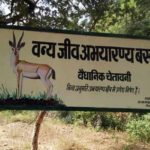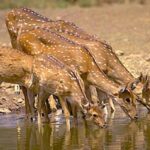Jaisamand Wildlife Sanctuary is located near Udaipur in the Indian state of Rajasthan. It is situated around the Jaisamand Lake, which is one of the largest artificial lakes in Asia. The sanctuary spans over an area of approximately 62 square kilometers and was established in the year 1957.
The sanctuary is known for its diverse flora and fauna. It is home to various species of wildlife including panthers, wild boars, deer, leopards, hyenas, chital, sambhar, and various species of birds. The avian population includes migratory birds as well, making it a paradise for birdwatchers.
Visitors can explore the sanctuary through guided tours, nature walks, and safaris, enjoying the natural beauty and spotting wildlife in their natural habitat. The serene surroundings of the Jaisamand Lake add to the charm of this wildlife sanctuary, making it a popular destination for nature enthusiasts and tourists visiting Udaipur and its nearby areas.
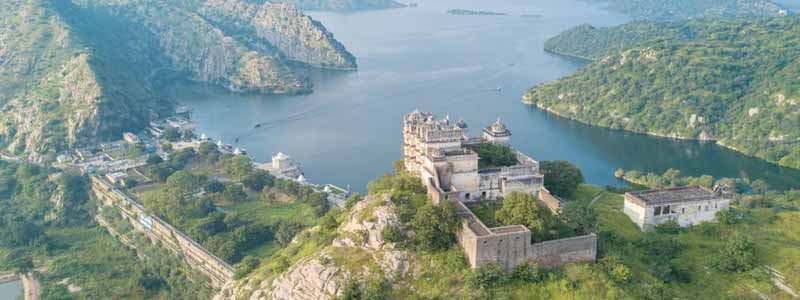
History of Jaisamand Wildlife Sanctuary
Jaisamand Wildlife Sanctuary, also known as Dhebar Lake, is a stunning artificial lake situated near Udaipur in the Indian state of Rajasthan. Constructed in the 17th century, this lake was built by Maharana Jai Singh, the ruler of Udaipur, between 1685 and 1691. The lake was named after him and it is one of the largest artificial freshwater lakes in India, covering an area of around 87 square kilometers.
The primary purpose behind the construction of Jaisamand Lake was to cater to the water needs of the people in the region and to provide a reliable source of water for irrigation. Along with its utilitarian function, the lake was also created for its aesthetic value, enhancing the beauty of the surrounding area and serving as a recreational spot for the local populace.
The lake is fed by the Gomati River and is adorned with a series of intricately carved marble steps, stunning cenotaphs, pavilions, and islands. There are seven islands within the lake, each housing beautiful structures such as palaces, temples, and gardens, which were built to enhance the picturesque landscape of the area Udaipur Tour Packages.
Jaisamand Lake remains an important historical and cultural landmark in the region, attracting tourists and locals alike. Its serene ambiance, coupled with the surrounding lush greenery and architectural marvels, continues to captivate visitors and offers a glimpse into the rich heritage of Rajasthan.
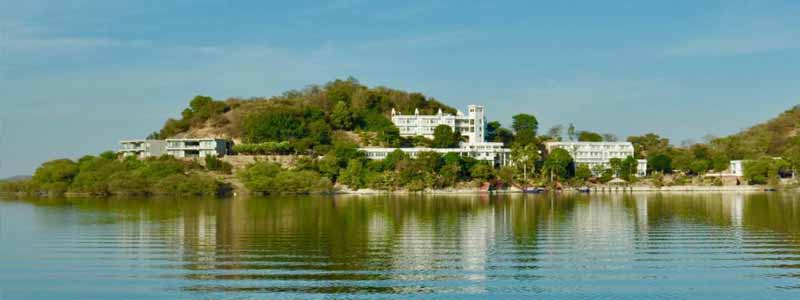
Places to visit near Jaisamand Wildlife Sanctuary
Near Jaisamand Lake in Udaipur, there are several interesting places and attractions that visitors can explore. Here are some of them:
Rajsamand Lake: This lake is located about 60 kilometers from Jaisamand Wildlife Sanctuary and is known for its beauty and historical significance. It was built by Maharana Raj Singh in the 17th century.
Kumbhalgarh Fort: Situated approximately 50 kilometers from Jaisamand Lake, Kumbhalgarh Fort is a UNESCO World Heritage Site and is renowned for its massive walls, which are among the longest in the world. The fort offers stunning views of the surrounding Aravalli Range.
Haldighati: Famous for its historical significance, Haldighati is about 50 kilometers away from Jaisamand Lake. It is known for the Battle of Haldighati fought between Maharana Pratap and the Mughal Emperor Akbar in 1576.
Nathdwara: A religious town located around 60 kilometers from Jaisamand Lake, Nathdwara is famous for its Shrinathji Temple, dedicated to Lord Krishna. The temple attracts a large number of devotees throughout the year.
Eklingji Temple: Situated about 40 kilometers from Jaisamand Lake, Eklingji Temple is a prominent Hindu temple complex dedicated to Lord Shiva. The temple’s intricate architecture and religious significance make it a worthwhile visit.
Ranakpur Jain Temple: Approximately 80 kilometers from Jaisamand Lake, Ranakpur Jain Temple is an exquisite architectural marvel known for its intricate marble carvings and stunning architecture.
Sas Bahu Temples: Located in Nagda, around 30 kilometers from Jaisamand Lake, these ancient temples are dedicated to Lord Vishnu and are known for their intricate carvings and historical significance.
These places near Jaisamand Wildlife Sanctuary offer a blend of historical, cultural, and religious experiences, allowing visitors to explore the rich heritage and natural beauty of the region.
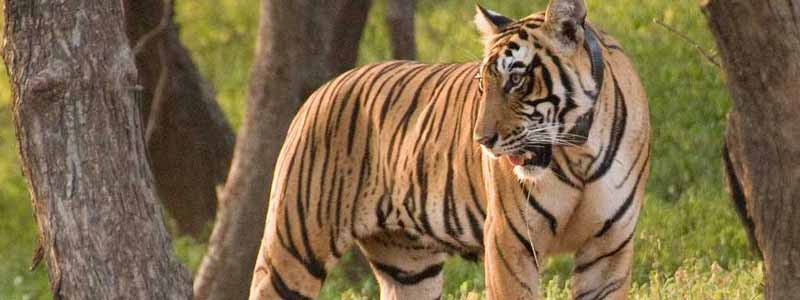
Best time to visit Jaisamand Wildlife Sanctuary
The best time to visit Jaisamand Lake in Udaipur is during the winter season, from October to March. During these months, the weather is pleasant and relatively cooler, making it ideal for outdoor activities and sightseeing. The temperatures during this time range from around 10°C to 25°C, providing a comfortable atmosphere for exploring the lake and its surrounding attractions.
The winter season allows visitors to enjoy the serene beauty of the lake without the discomfort of extreme heat. The clear skies and comfortable weather create a perfect setting for activities like boating, birdwatching, and exploring the nearby historical sites and temples. Moreover, this period also coincides with various festivals and cultural events in Udaipur, offering tourists a chance to witness the vibrant local culture and traditions.
Avoiding the scorching heat of summers and the unpredictable rainfall of the monsoon season, the winter months provide an optimal climate for a pleasant and memorable visit to Jaisamand Wildlife Sanctuary and its vicinity.
How to Reach Jaisamand Wildlife Sanctuary
To reach Jaisamand Wildlife Sanctuary near Udaipur, you have several transportation options:
By Air: The nearest airport to Udaipur is the Maharana Pratap Airport (Dabok Airport). From there, you can hire a taxi or use public transportation to reach the sanctuary, which is roughly 50-60 kilometers away.
By Train: Udaipur City Railway Station is well-connected to major cities in India. From the railway station, you can hire a taxi or take a bus to reach Jaisamand Wildlife Sanctuary, which is about an hour’s drive away.
By Road: Udaipur is well-connected by road to various cities and towns in Rajasthan and neighboring states. You can either drive to the sanctuary or hire a taxi from Udaipur. State-run buses and private transportation options are also available.
Once you reach Udaipur, you can inquire locally or use GPS/maps to navigate to the Jaisamand Wildlife Sanctuary. It’s advisable to plan your transportation in advance and check for the most convenient mode of travel based on your preferences and schedule.


